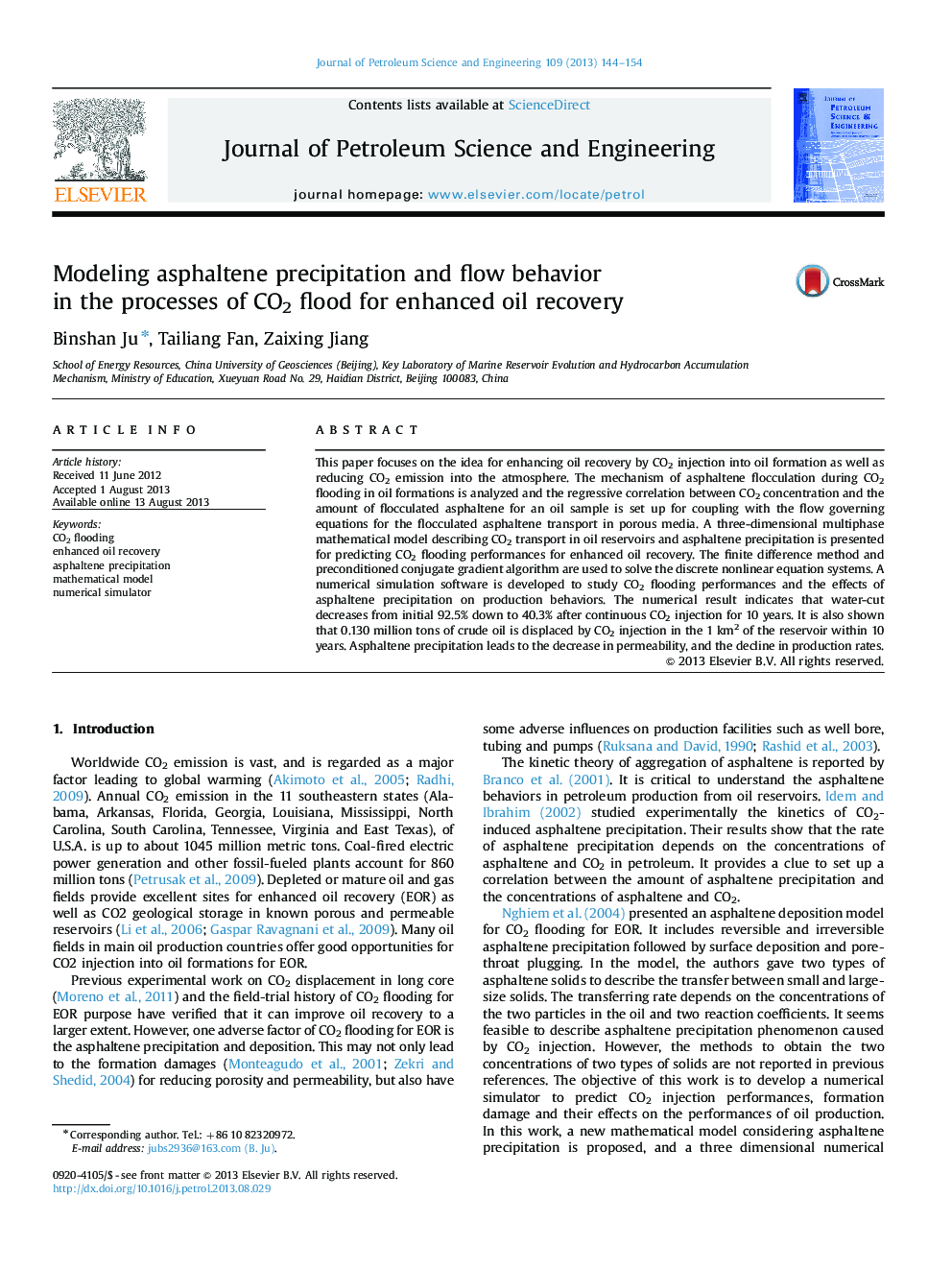| Article ID | Journal | Published Year | Pages | File Type |
|---|---|---|---|---|
| 1755264 | Journal of Petroleum Science and Engineering | 2013 | 11 Pages |
•We presented a mathematical model describing CO2 transport in porous media.•A numerical simulator was developed for predicting CO2 flooding for EOR.•The simulation shows that water-cut decreases from 92.5% to 40.3% after CO2 flooding.•Asphaltene precipitation leads to formation damage and increase in CPU time.
This paper focuses on the idea for enhancing oil recovery by CO2 injection into oil formation as well as reducing CO2 emission into the atmosphere. The mechanism of asphaltene flocculation during CO2 flooding in oil formations is analyzed and the regressive correlation between CO2 concentration and the amount of flocculated asphaltene for an oil sample is set up for coupling with the flow governing equations for the flocculated asphaltene transport in porous media. A three-dimensional multiphase mathematical model describing CO2 transport in oil reservoirs and asphaltene precipitation is presented for predicting CO2 flooding performances for enhanced oil recovery. The finite difference method and preconditioned conjugate gradient algorithm are used to solve the discrete nonlinear equation systems. A numerical simulation software is developed to study CO2 flooding performances and the effects of asphaltene precipitation on production behaviors. The numerical result indicates that water-cut decreases from initial 92.5% down to 40.3% after continuous CO2 injection for 10 years. It is also shown that 0.130 million tons of crude oil is displaced by CO2 injection in the 1 km2 of the reservoir within 10 years. Asphaltene precipitation leads to the decrease in permeability, and the decline in production rates.
